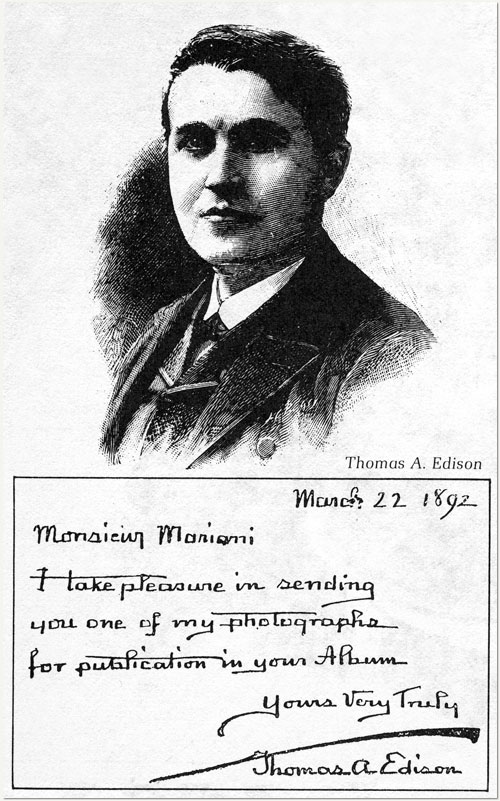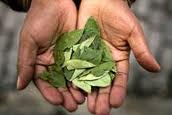Coca: History, Chemistry and Current Uses
Click here for Coca: Science and Chemistry.
Click here for The Culture of Chewing Coca: Origin in Enforced Slavery, Mercury Poisoning, Theft of Bolivia's Silver, and Colonial Spanish Genocide in Bolivia
For thousands of years, indigenous people of the Andean regions of South America have chewed on coca leaves (plant genus Erythroxylum), and have drunk coca teas (mate de coca), both of which transfer coca alkaloid, a very mild stimulant to the human body, a stimulus similar to a cup of coffee or green/black tea (a cup of mate de coca contains about 4 milligrams of organic coca alkaloid). Mate de coca’s mild stimulation is due to the coca alkaloid, benzoylmethylecgonine (C17H21NO4), a /\/-methylated heterocycle, a group of chemicals which includes the cough syrup ingredient codeine (C18H21NO3), a sedative. Mate de coca is legally sold in Peru, Bolivia, Colombia, and Ecuador, and can be bought without too much trouble in Chile. Some brands of mate de coca include Herbi, Delisse, and Andes Spirit (manufactured in Peru), and Windsor, EcoCaranavi and NovoAndina (manufactured in Bolivia). One Bolivian brand, Frutt’e Coca Mate produced by Productos Ecologicos Naturalezea is exported to Colombia, Peru, Costa Rica, Italy and supposedly the United States.
Click here for Timetable of History of Coca.
Click here for Precious Leaf Called Coca,
from Royal Commentaries of the Incas (1616).
Coca Alkaloid is Not Addictive
Brazil refuses to allow the imports of non-addictive, non-toxic coca leaves for teas and related products. Yet Brazil is the world's largest exporter of highly-addictive, highly-toxic tobacco leaves. Brazil is responsible for millions of deaths a year due to lung cancer. This hypocrisy violates human rights. Click here for Global exports of tobacco, and how tobacco is deadliest narcotic in the world.
Also, why tobacco and alcohol are more evil than coca tea.
There are no psychoactive effects when drinking coca tea. The coca alkaloid is not water-soluble, and is broken down in the stomach. There are no psychoactive effects when only chewing coca leaves. Any coca alkaloid that is released and combined with saliva, when swallowed (as Northerners tend to do), results in the same effect as drinking coca tea – the coca alkaloid is broken down in the stomach. The only way to obtain a stimulant effect with coca leaves is to put a wad of coca leaves into your mouth, wrapped around a bit of carbonized banana, and suck on the mixture like a piece of candy. The carbonized banana activates the coca alkaloid, and only is stimulating when absorbed through the mouth, which for Northerners is not easy to do without practice.
Thus, there is little evidence that consumptive use of coca leaf (e.g., coca tea, chewing coca leaves, etc.) is addictive. At worst, coca leaf extracts are as addictive as caffeine, and extremely less addictive than the much more deadly drugs of alcohol and nicotine. In this way, coca extracts are very different from “street” cocaine, which is the hydrochloride variant of the alkaloid that is water-soluble (typically, a line of “coke” has 20 to 30 milligrams of cocaine hydrochloride). Cocaine hydrochloride (C17H21NO4-HCl) is generally perceived as less addictive than nicotine, and requires large amounts of chemical processing to be manufactured, starting with the coca alkaloid in coca leaves. Green coca leaves are to white cocaine, as grapes are to wine – which is why a kilogram of quality coca leaves can cost US $3.00 while a kilogram of cocaine in Miami can cost $30,000. Indeed, in some places, cocaine addicts are weaned off their addiction by drinking extracts of mate de coca. Safely drinking coca tea is cultural, while snorting lethal cocaine is a good way to kill yourself faster than smoking cigarettes with their nicotine. In 2009, Bolivian president Evo Morales put it simply: “Coca yes, cocaine no.”
Click here for Evo Morales and the Rehabilitation of Coca.
Click here for Maps of Coca Growing Regions of Bolivia.
Coca Alkaloid Chemistry
Coca alkaloid and caffeine extend pleasure, in part, by blocking dopamine re-uptake in the brain, which prolongs dopamine activity in the brain (interestingly, polyphenols in green tea and yerba mate also block dopamine uptake – no studies have been found of the dopamine-blocking polyphenols from Erythroxylum mate). Consume a cup of coffee or coca mate, and the pleasure lasts longer without the extra caloric consumption. Additionally, both coca alkaloid and caffeine increase levels of pleasurable endorphins. A trick of nature makes water-soluble alkaloids, such as caffeine, nicotine, and cocaine hydrochloride, readily absorbable by the body to induce pleasurable effects – such alkaloids resemble a chemical important to cellular function, xeronine, which is quickly absorbed by cells.
Industrially, coca alkaloid is synthesized starting with the alkaloid tropinone (C8H13NO), which has an important tropane structure. Tomatoes and potatoes are sources of the similar solanaceous alkaloids, which also have a tropane structure, which can be converted into ecgonine alkaloid and then into coca alkaloid. Nicotine is a non-tropane solanaceous alkaloid (though the biosynthesis of nicotine and tropanes starts with a pyrrolidine ring). Click here for: a chemical synthesis pathway graph of these chemicals.
Click here for Identification and quantitation of alkaloids in coca tea
(Forensic Sci. Int. 1996).
Coca Cola
The original version of Coca Cola launched by John Stith Pemberton in Atlanta in 1886 in the United States, contained approximately nine milligrams of coca alkaloid (five ounces of Erythroxylum leaf were added to each gallon of Coca Cola syrup). Currently, coca leaves are imported into the United States under a special license, the coca alkaloid is extracted from the leaves, is transformed into cocaine hydrochloride, and sold to pharmaceutical giant Mallinckrodt. The alkaloid-free processed leaves are then sent to soda companies to use as flavoring, sodas that are sugared.
Coca Cola was actually Pemberton’s second product. His first product was French Wine Cola, a combination of wine and cocaine that was popular in France in the late 1900s (Vin Mariani was invented by French chemist Angelo Mariani in 1863, so popular a product that Mariani was given a medal by Pope Leo XIII for his cocaine wine). Because of local laws in Atlanta, Pemberton was forced to remove, not the cocaine, but the alcohol, which he replaced with sugar syrup, resulting in Coca Cola. For mostly racist reasons, Pemberton removed the cocaine in 1903, since cocaine didn’t become illegal in the United States until 1914. Ironically, for racist reasons as well, in the mid-1500s, coca leaf went from being a religious practice for Incan Indians to being a management tool, when their Spanish conquerors realized their Incan slaves would worker harder and longer by chewing the coca leaf. One can argue that developed countries are now being racist by attacking any legitimate use of coca leaf while subsidizing and greatly supporting products based on the orders-more addictive and death-inducing tobacco leaf and its should-be-narcotic nicotine. One could argue religious discrimination, as the highly addictive and destructive tobacco/nicotine is produced by predominantly Protestant states (North Carolina, Kentucky, Virginia, Tennessee, South Carolina and Georgia) with tremendous influence in the U.S. Congress to maintain the legal fiction that nicotine is not a deadly narcotic. On the other hand, coca leaf is produced by the Andean states which are predominantly Catholic and indigenous religions. And with regard to sugar, one cannot forget that much of racism was born of the hatred needed to justify making slaves of Africans, half of whom in the Americas – millions of them – worked and died on sugar plantations.
Vin Mariani
The reason for the popularity of Vin Mariani and French Wine Cola is that the combination of ethanol in the wine, and cocaine, is converted in the human body into cocaethylene, which acts like cocaine, but produces more euphoria (one such modern popular drink is Pisco de Coca in Peru). And indeed, beyond ingesting pure cocaine, uses of cocaine where legal, have been for purposes of stimulation. One of the greatest inventors in human history, named on the most patents, Thomas Edison, he regularly drank Vin Mariani, which explains in part his ability to work around the clock exploring his inventions.

A modern day equivalent of Vin Mariani, starts with pisco, a brandy made from grapes that are typically 35% to 45% alcohol (70 to 90 proof), popular in Chile and Peru. The Peruvian national cocktail is Pisco Sour, a mix of pisco, egg whites, lime juice, syrup and bitters. While a Pisco Sour is sufficient enough stimulant for most people, a special version is sold – Pisco de Coca, which includes the added kick of coca leaves, and recreates the combination of coca and ethanol.
A modern day equivalent of the original Coca Cola is made by soda beverage manufacturers in Bolivia (e.g., Ospicoca’s CocaColla), which has restarted producing cola soda drinks with coca alkaloid derived from coca leaves, which with cane sugar instead of fructose, which brings back much of Pemberton’s original Coca Cola. Coca extracts are also found in a few energy drinks. In all of these products, the use of coca extracts is for its traditional stimulant properties (not that many of these products need much more in the way of stimulants, given the presence of much sugar and caffeine).
Coca Products
The web site, www.cocatea.com, sells a variety of non-diet food and beverage products that based on coca teas leaves: toffees, cookies, noodles, energy bar, soaps, and wine, as well as a variety of coca teas. A candy, “Masticable de Coca”, manufactured by Inalfa of Bolivia, comprises coca extract, stevia, honey and natural flavorings. To encourage legal products that are beneficial to society, the government of Bolivia has created a Directorate of Coca Leaf and Industrialization, overseen by Gumercindo Pucho, vice minister of coca (as of the year 2013). Currently, 40 companies are registered to develop coca products, though such products tend to add extracts of coca leaf to existing alcoholic and/or sugary food products. A few companies in Bolivia, for example, make ointments based on coca leaf extract to be applied to the skin for relieving pain.
Click here for INCHEM's safety guide to using coca leaf.
| Year | Alkaloid | Raw material | Discoverer | Application | Status |
|---|---|---|---|---|---|
| 1806 | Morphine | Opium | Sertumer | Strong analgesic | Illegal |
| 1817 | Emetine | Ipecac root | Pelletier & Magendie | Emetic | Legal |
| 1819 | Caffeine | Coffee bean | Runge | Stimulant | Legal |
| 1819 | Atropine | Atropa bellandonna | Runge | Anticholinergic | Prescription |
| 1820 | Quinine | Cinchona bark | Pelletier & Caventou | Malaria treatment | Legal |
| 1828 | Nicotine | Tobacco | Posselt & Reimann | Insectide Killing People | Legal THE WORST DEADLY ADDICTIVE DRUG |
| 1832 | Codeine | Opium | Robuquet | Analgesic | Prescription |
| 1835 | Thebaine | Opium | Tibourmery & Pelletier | Analgesic | Illegal |
| 1841 | Theobromine | Cacao plant | Voskresensky | Vasodilator | Legal (chocolate) |
| 1848 | Papaverine | Opium | G. Merck | Muscle relaxant | Prescription |
| 1860 | Cocaine | Coca leaf | Niemann | Anaesthetic | Illegal |
